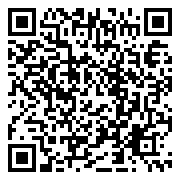Attend IT Blog
You Can Embrace Remote Operations Without Sacrificing Cybersecurity… It Just Needs to Be Done Right
Remote work has proven incredibly useful over the past few years despite many employers having various concerns about its implementation. While these concerns vary, one prevalent one is how remote operations impact cybersecurity.
If you’re utilizing remote operations to any degree and aren’t concerned about cybersecurity, you must adjust this mindset and correct your approach.
How Does Remote Work Influence Cybersecurity?
Cybersecurity becomes more challenging when the doors are open for remote work, mainly because the threat surface expands with your business’ operational footprint.
Think about it this way: if there’s only one door to a house, you only need to secure that one door. However, the more doors you add, the more doors you must ensure are locked up tight. The more devices you have outside your network reaching in, the more you need to secure… and this is precisely the situation that remote work creates for businesses.
Before we go any further, we must acknowledge just how beneficial remote and hybrid work has proven to be for the businesses that adopt it. That is undeniable. However, security mustn’t be sacrificed in favor of these options.
The hard truth is that remote operations will introduce additional threats to your business. If you plan to implement any degree of them, you must protect your business with the appropriate security measures. Let’s examine what this looks like.
Certain Protections are Necessary for Secure and Successful Remote Operations
To determine which protections are needed, it helps to understand the dangers that remote work can introduce. These dangers include (but are certainly not limited to):
- Company data being accessed via insecure connections or unauthorized devices. This can and should be mitigated with a virtual private network (VPN), which encrypts data while in transit via a secured tunnel between an endpoint and your business network. A zero-trust approach to data access can also contribute by blocking certain team members, devices, or locations from said data based on a strategy of minimizing accessibility to strictly those who need it.
- Cybersecurity awareness lacking amongst your remote team. Your team members—regardless of where they work—need to be trained so they are familiar with the threats your business faces and how to respond to them, as well as with the policies you have in place regarding cybersecurity while working remotely.
- Unmanaged and unmaintained devices being utilized. To protect your company’s data, all devices that employees use while working must be able to be monitored and maintained… especially those being used outside of the business network.
- Company data being stored outside the network. All data must be stored centrally for the sake of both security and operations. Otherwise, it will be kept on the individual devices your team is using… and inherently, it will be less secure and inaccessible to other team members who may need it for their own tasks.
This is a Good Start… Trust Us to Help You with the Rest
The fact is that there is so much to cybersecurity—even without the wrinkles that remote operations introduce—that one blog post simply can’t do much more than scratch the surface. That’s why we would love to sit down with you and examine your unique situation to determine where your largest concerns are and how they can be addressed.
Don’t let your attempts to improve your business through initiatives like remote work and similar efforts leave it vulnerable. Reach out to us at 020 8626 4485 to start a conversation about how to keep it all secure while still making progress toward your business objectives.
About the author

